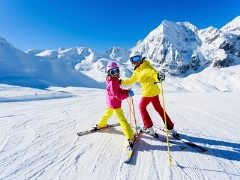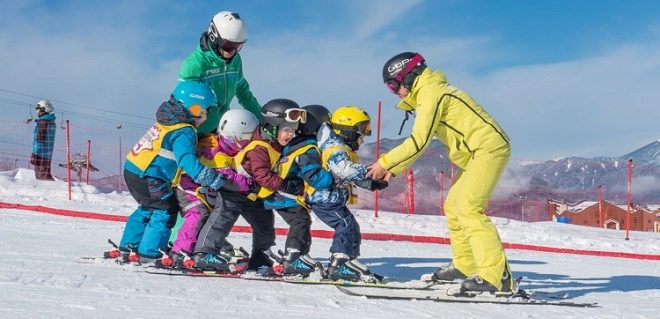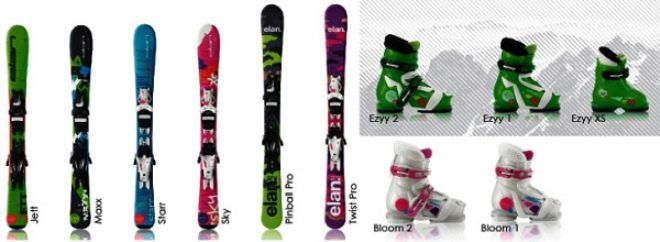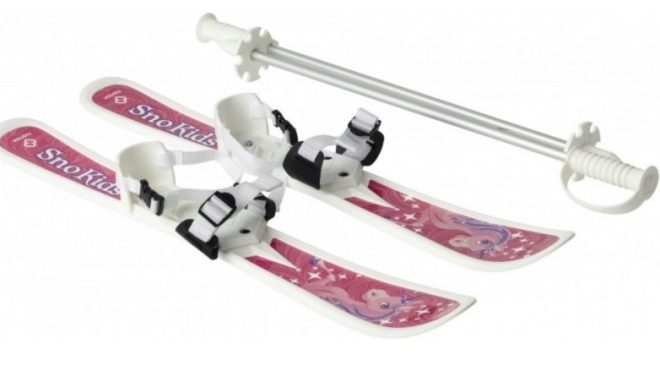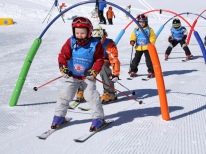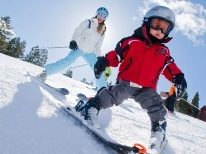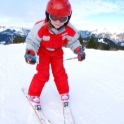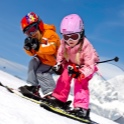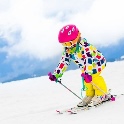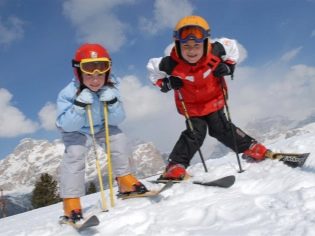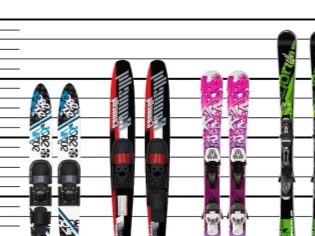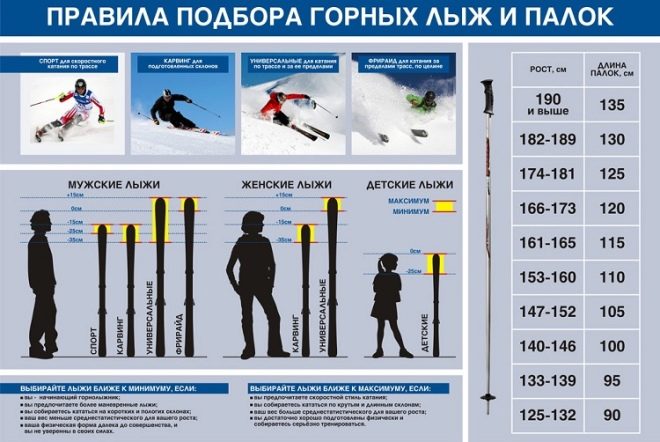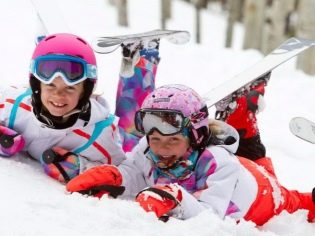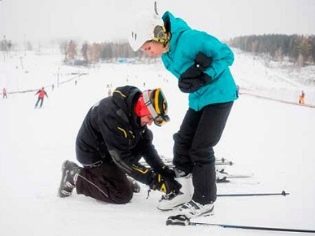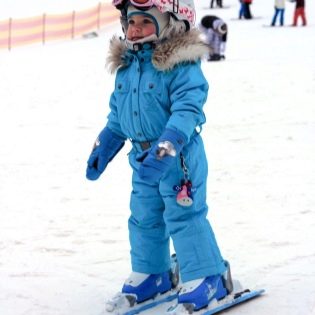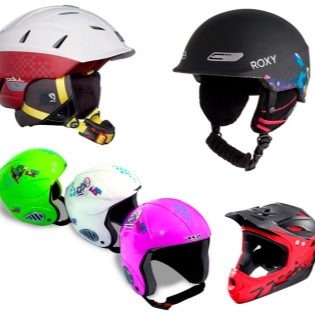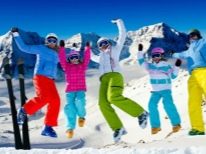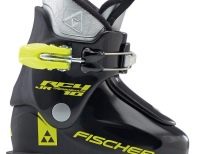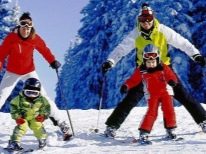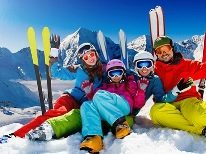How to choose a children's ski?
Passion for alpine skiing is gradually becoming widespread, and the ideal vacation is not for everyone associated with the summer and the sea - someone only wants snow and mountains. Modern parents are not inclined to retreat, on the contrary, they want to quickly connect to their hobbies and children, especially since learning rather complicated skiing is desirable from childhood.
Mom and dad probably want the child to enjoy this activity. And so that he did not get injured and feel comfortable, they first of all pick up skis and necessary sports equipment for him. But not everyone knows how to choose them correctly, and a lot depends on it.
Kinds
It happens that the parents themselves and not yet very experienced skiers themselves - it is possible that they just got an idea and immediately want to buy skis for the whole family. Experts say that you should not do that - if you are unsure of the duration of your hobby and do not know how to choose, you better start by renting skis - they will recommend the best option for each individual track, and even be able to try all options without great expense. Otherwise, an inexperienced buyer can buy equipment not at all for ski slopes, but for walking on level ground. In general, children's alpine skis are classified similarly to adult models.
There are three main types of skis, having in their compositions more specific subspecies.
- Tourist models. They are usually relatively inexpensive, as they are designed for relatively rare use and the absence of any outstanding tricks on the track.
- Sports models. More durable and durable, and therefore more expensive. Manufacturers of such models provide that the future owner devotes considerable time to the use of inventory and can give him a serious burden.
- Special models. Unlike the two previous types, they are not suitable for any tracks - they are rather adapted for training certain aspects of skiing. So, slalom skis are well suited for training to descend at high speed, and there are, for example, special skis for ski jumping and acrobatics.
For children, it is best to choose tourist models, since all the others will not justify themselves - except that the child will seriously begin to play sports.
Stiffness and length of models
Ordinary skis are characterized by a mass of parameters, none of which can be ignored. For example, inventory rigidity is of great importance. It is difficult to measure rigidity in numerical terms, but all skis are divided into soft and hard.
The soft version predictably has increased elasticity, due to which improved depreciation is achieved on a nonideal highway. For the same reason, it is quite difficult to develop a high speed on them, but with slow descent, the skier may not be afraid that his abnormal and abrupt actions will lead to the breakdown of equipment. Of course, speeding on such skis can lead to its breakdown, but beginners usually do not allow this, so the soft option is just for them.
Accordingly, hard skis for children are bought less often - they are more expensive and usually imply a fairly high level of ownership. Such a construction is much better for a skier to listen to and allows him to fit into difficult turns, but if a child does not know how to do this, then no hardness will help him.
As for the length of the skis, in different children's models it usually ranges from 70 to 120 cm. When choosing, of course, in many respects it is necessary to focus on the growth of the child - it is undesirable to buy either the model from which he grows until the next holiday, nor the which he clearly "for growth".
However, a certain length variation is available for every person, including children. So, for a child 110 cm in height, an inventory of 110 cm in length and 90 or 100 cm is well suited - it all depends on the type of track and personal preferences, but short 80 cm models will already be a bad choice.
In general, long skis are more often chosen by speed lovers, since they are optimally suited for fast driving and are comfortable in situations where you have a straight and wide track. If a child or an adult prefers speed and chooses only comfortable tracks, then long models will suit him, even if he has enough riding experience to maneuver. The disadvantage of a considerable length is that such a ski is not very convenient for sharp turns - it has a rather long turning arc.
Accordingly, shorter skis have opposite characteristics - they fit perfectly into turns, but usually do not associate with high speed, if only because it’s not worth developing with route irregularities. For the full use of such equipment it is already desirable to be able to zigzag yourself, so these models are chosen by those who are not without a certain technique. On the other hand, the ability to maneuver at low speed is suitable for beginners, because during a quick descent, even if they do not have to steer, they can simply panic.
How to choose?
It’s better not to experiment without shopping experience - for experiments it’s better to go to rental locations located directly next to the selected highway. The consultants present here surely know which model is best suited for the descent precisely here, therefore they will help to level out the lack of experience in a particular case. However, if you are going to ride a lot with a child and on different tracks in any case, then you will have to buy inventory sooner or later, and then it’s better to know how to choose it correctly.
By height
Height for the choice of skis is of decisive importance, because the height of the skier and the length of his equipment must be commensurate. For children, skis are usually chosen to be as short as possible - at the level of their height minus 20 cm. Such a model is well suited for small-length runs where you can slowly work out the control in the form of turns. Too quickly on short skis you usually do not accelerate, and this is an extra guarantee of your own safety for a beginner, so children who try themselves for the first time in skiing should not try anything else.
If a child is not riding for the first time, he is confidently skiing and would certainly like to drive along a straight and wide track, but a little faster, he will like the equipment much more, whose length is less than his height by only ten centimeters.
To manage such skis on a turn will be noticeably more difficult, so you need skills and an understanding of when to start to fit into turns. With such a model, you must either carefully choose the route, or do not rush to go on it.
It makes sense to buy those skis, whose length is equal to the growth of a skier, but this is already a pure model for slalom. With an even and wide descent, it gives the maximum speed at which whistling in the ears is heard, but turning is really difficult. Professional slalom players compete on such inventory even on winding tracks, but they are professionals. Therefore, the decision to buy such models is appropriate for those children who have already understood that skiing is all life.
By weight
When choosing equipment for height, one should not forget that weight is another important parameter that is not ignored, at least in the case of children. Without proper pressure, too long skis simply will not go down the slope, remaining in the place where they were put.
If a child weighs less than 20 kg (a rarity, it is worth considering whether it’s time to teach such a baby), then the maximum inventory length is set at 70 cm. Many children of avid skiers get up to their feet for the first time, and their model does not should exceed 90 cm. If the child’s weight exceeds 30 kg, but has not reached 40 kg, the maximum length limit of the ski is one meter. Those children, whose weight is more than 40 kg, choose the equipment by analogy with adults - here the weight will no longer play a role, and the model is chosen solely for height.
How to choose equipment?
For the pleasure of riding and complete safety of the skier you need to carefully select not only the skis themselves, but also the rest of the equipment. It is important to remember the rule: here nothing is bought for growth; absolutely everything must correspond to the current parameters of the skier, even just clothes. In the case of children, this can result in huge regular expenses for updating the inventory, but this is the only way to gain confidence that the child will not be injured due to lack of funding.
If constant purchases of new inventory to parents seem to be unreasonably expensive, and you still want to ride, you can become a regular customer of hire.
To skis of any kind, it is imperative that you also buy sticks with which the athlete pushes off the ground. They should be in the hand as comfortable as possible. The length of such equipment is determined as follows: it is necessary to bend the elbow joint at a right angle, then a suitable stick, located strictly vertically, with the handle will rest in the palm, and with its end will rest against the floor.
To ski, you need to buy and the corresponding ski boots - the latter are available in children's sizes, they are on average softer and more comfortable than adults. Boots must be compatible with ski bindings and inventory widths. Anchorage usually has a scale of efforts that shows how difficult it will be to set the inventory in motion - in the case of children, you should be guided to lower values of this indicator.
Useful tips
Often, choosing your own good equipment is best helped by your own experience, but if you yourself have learned to skate as an adult, you may not know what is best for the child. For this reason, we have gathered some popular instructor tips on how to choose the right skis for children.
- Skis also differ in their geometry, and although inexperienced tourists do not always pay attention to this, it is better to train a child from childhood on carving models that an adult in the process of his tourism “career” might not get caught. This model has a different width throughout its duration - there are extensions on the heel and toe, while the middle, the so-called waist, is noticeably narrower. It is considered that it is somewhat more difficult to study on such models, as opposed to the classic, with the same width along the entire length.
- When choosing skis for an athlete of any level of experience, it makes sense to pay attention to the manufacturer as well. No wonder some models are very cheap and still not in special demand, while others at a high price are the dream of millions of skiers. However, children are advised to choose an inventory of the average price category, since cheap ones are usually of poor quality, and there is no sense in buying expensive ones - a small skier will quickly grow from them. Most experts agree that the majority of producers of the middle price segment equipment provide approximately the same quality of products, therefore, in choosing, you can only focus on the design you like,if all other indicators are the same.
- In economy mode, wanting to buy skis for little money, you should pay attention to used options. In the case of children, it is not so difficult to find any - the previous owner could easily simply grow out of a really good model with minimal wear. However, it is important to correctly assess the condition of the skis in order not to buy equipment with defects.
How to choose a ski for a child, see the following video.
